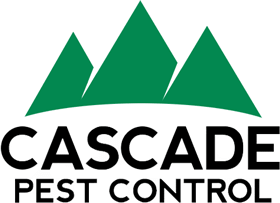Author: Kurt Treftz, Cascade Pest Control
As the weather warms and the world awakens, we increase our chances of running into insects and bugs who are also excited about the change in the seasons. Nobody wants to surrender their backyard (or their kitchen) to puny pests. So how do we fight back? Not all flies bite, but the ones that do can leave us pained and itchy, transmit disease, and even cause allergic reactions. Let’s learn to identify these interlopers so we can deal with them effectively.
Deer Fly
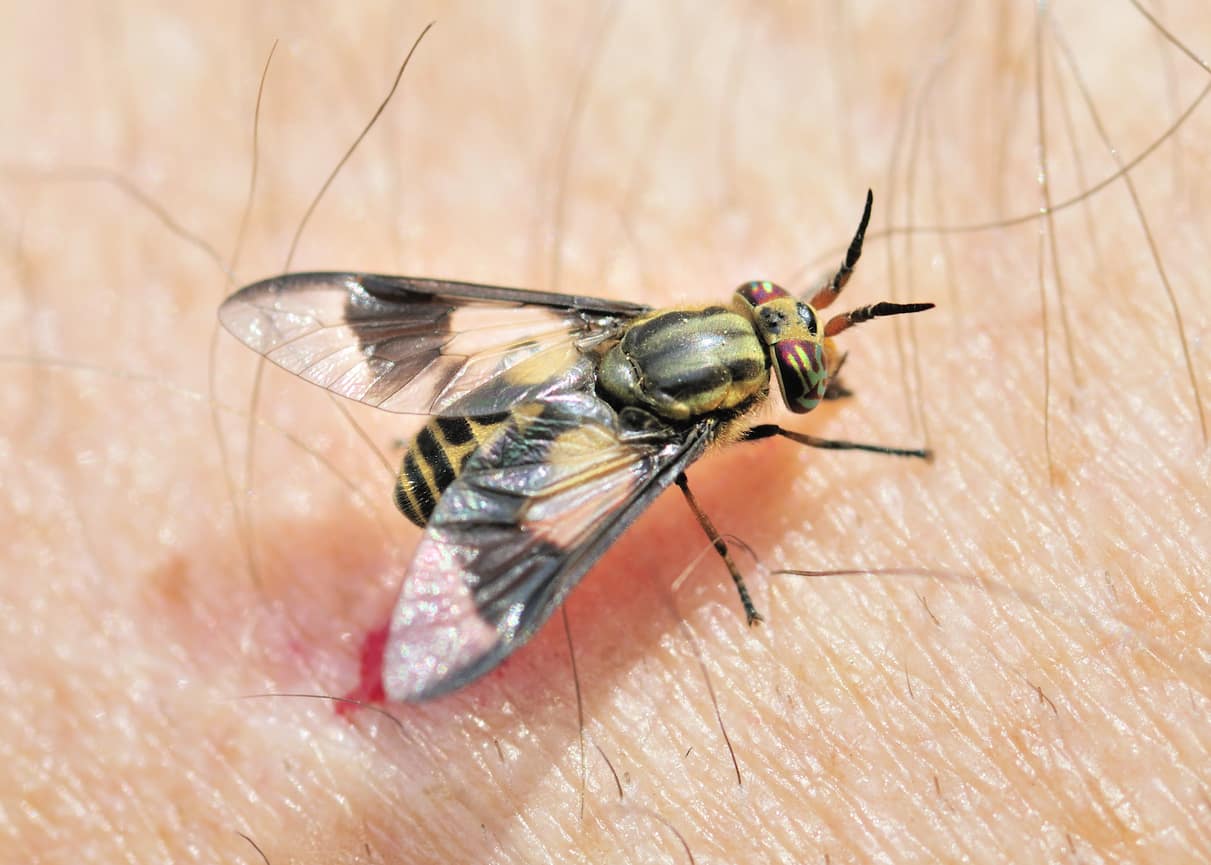
These medium-sized (¼ in long) pests are common throughout the United States and are one of the few to transmit disease to humans. Known as “rabbit fever”, tularemia is a bacterial disease from the bites of ticks and deer flies.
They are most common in the spring. Typically they are yellow-brown to black with dark bands on their wings. Sometimes their eyes are iridescent green. Their scissor-like mouthparts cause a painful bite when they open the skin.
Horse Fly
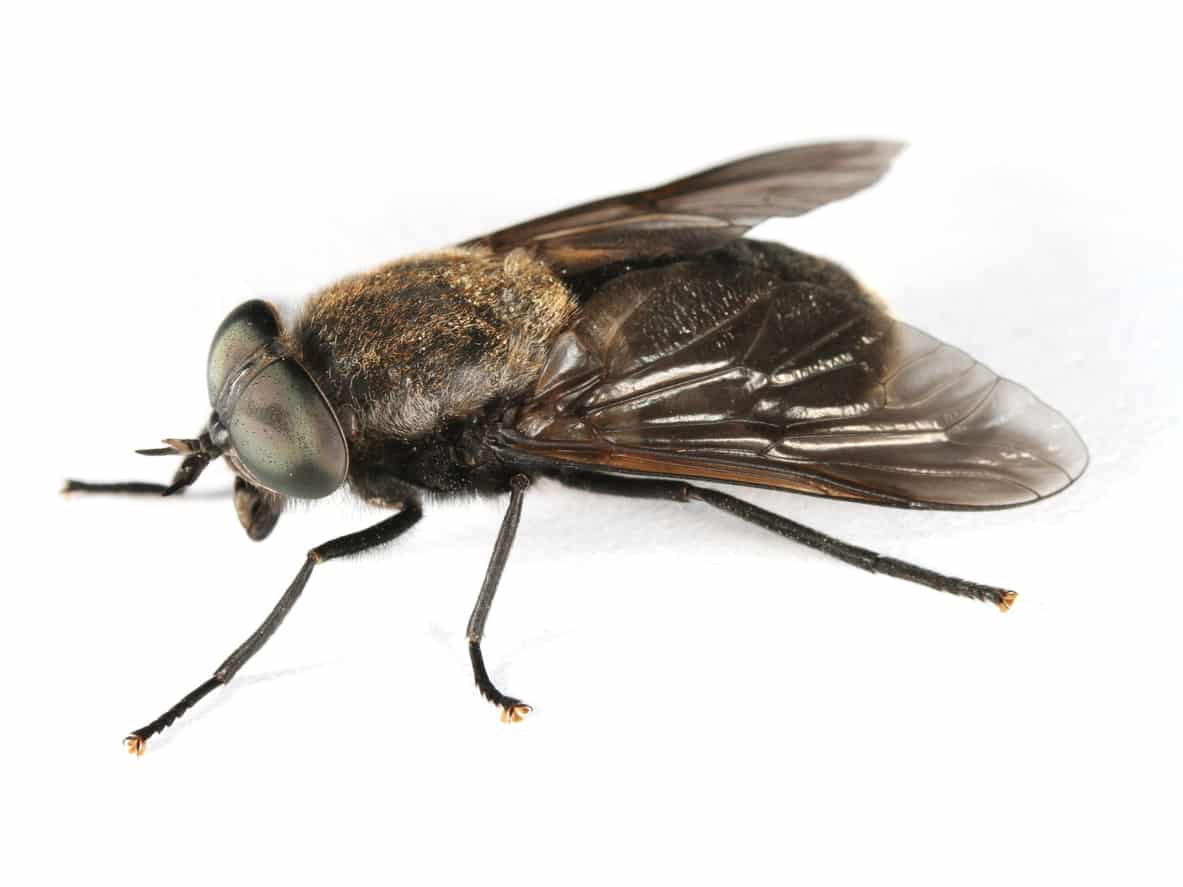
Larger than deer flies, horse flies may be as long as an inch or more. They feed on the blood of livestock and other animals so they are frequently found near farms (hence their name). Their larvae start in moist or wet conditions and then migrate to dryer soil to cocoon.
They are usually entirely black but some horse flies, known as “greenheads”, are light brown with shiny green eyes. They are usually fast fliers, and like deer flies make a painful bite with this scissor-like mouth.
Stable Fly
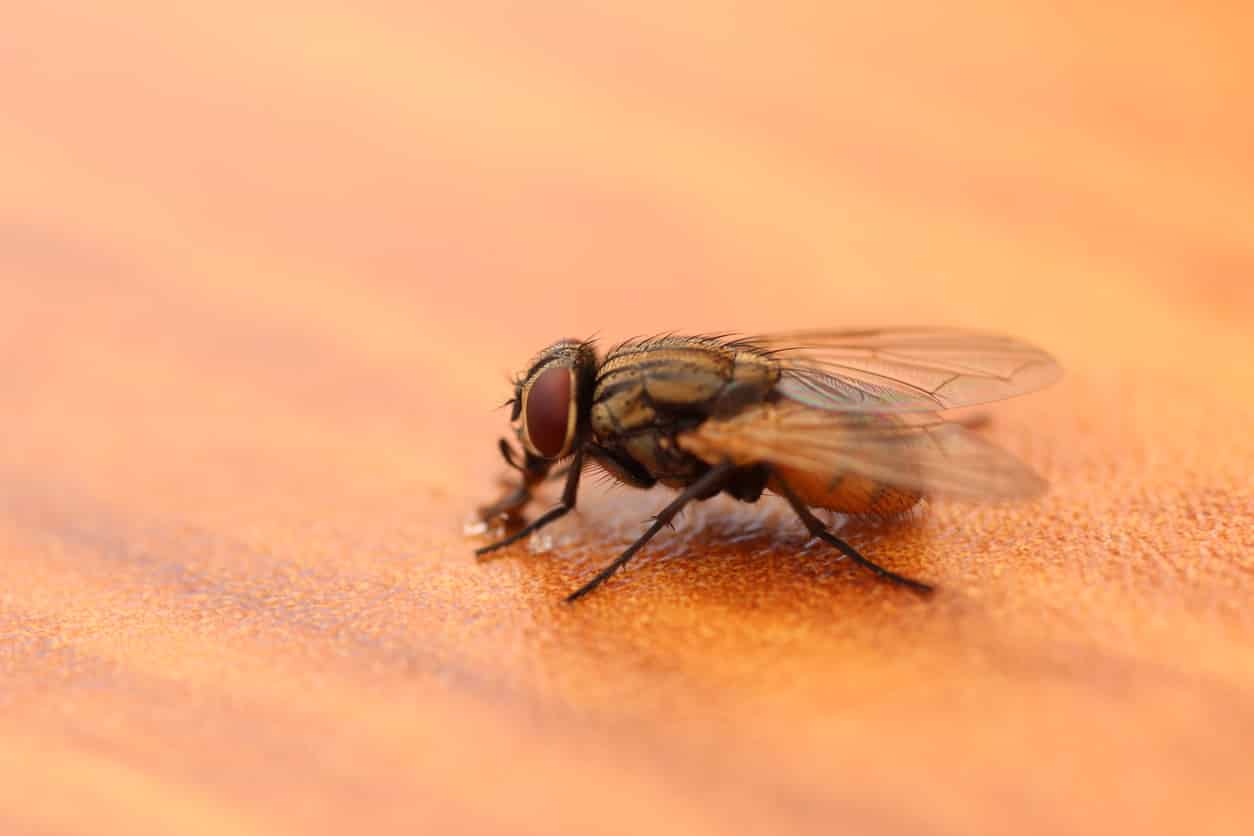
Similar in appearance to the common house fly, this stable fly is medium-sized (1/4inch) but with a pointed proboscis beneath its head, by which it sucks blood. It will fly several miles to bite livestock. And they lay their eggs in rotting vegetable matter like hay, grass, manure (sounds like a stable is a good place for a stable fly, eh?)
These gray flies have four dark stripes on their thorax. They are most abundant in late summer and fall and they are most likely to bite in the early morning or late afternoon. The bite is a sharp, stabbing pain often around the ankles.
Black Fly
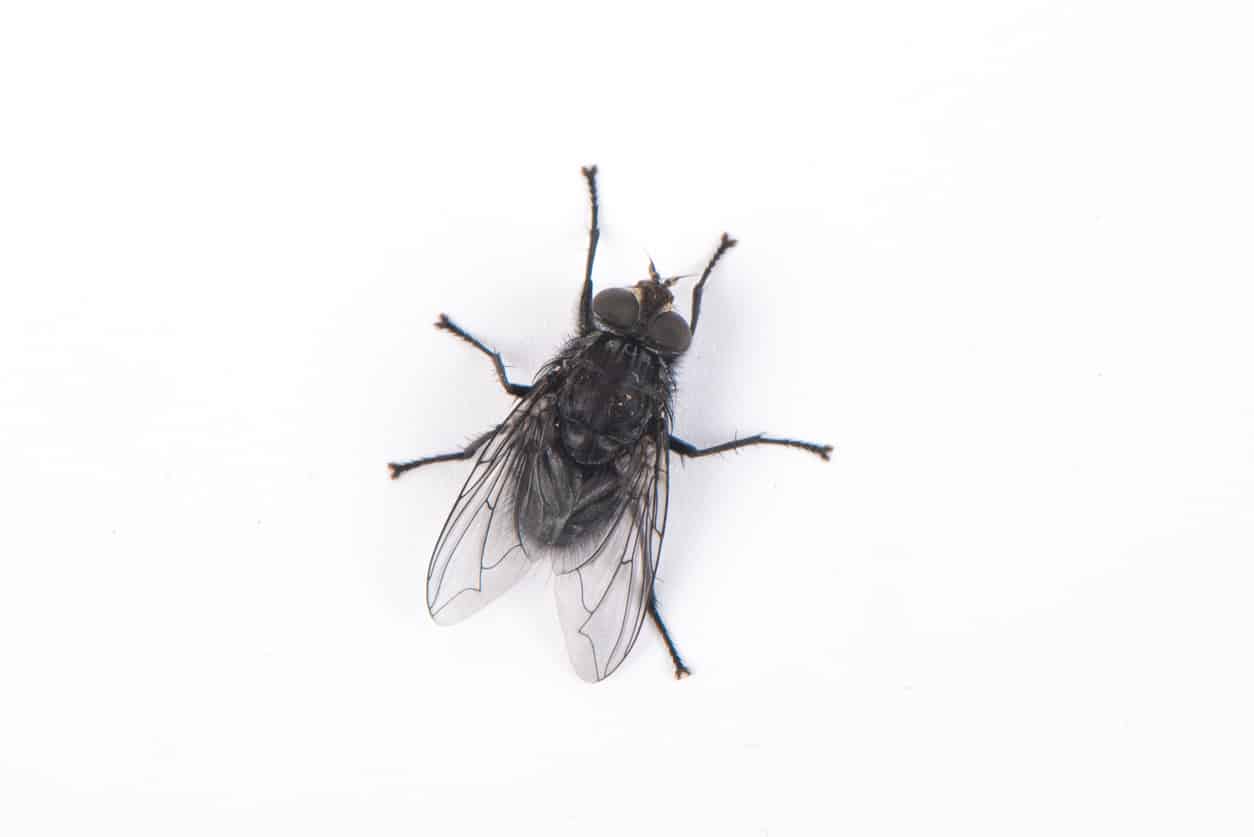
This small (1/8in), humpbacked fly is sometimes known as a buffalo gnat. Like other flies they are attracted to moist environments and their larvae attach to submerged stones.
While they do not transmit disease, they do pose a considerable risk to humans and livestock when they amass in large numbers. They can fly up to 10 miles in search of blood and their bites have been known to cause allergic reactions. Their bites can cause swelling/bleeding and may be itchy/slow to heal.
Biting Midge Fly
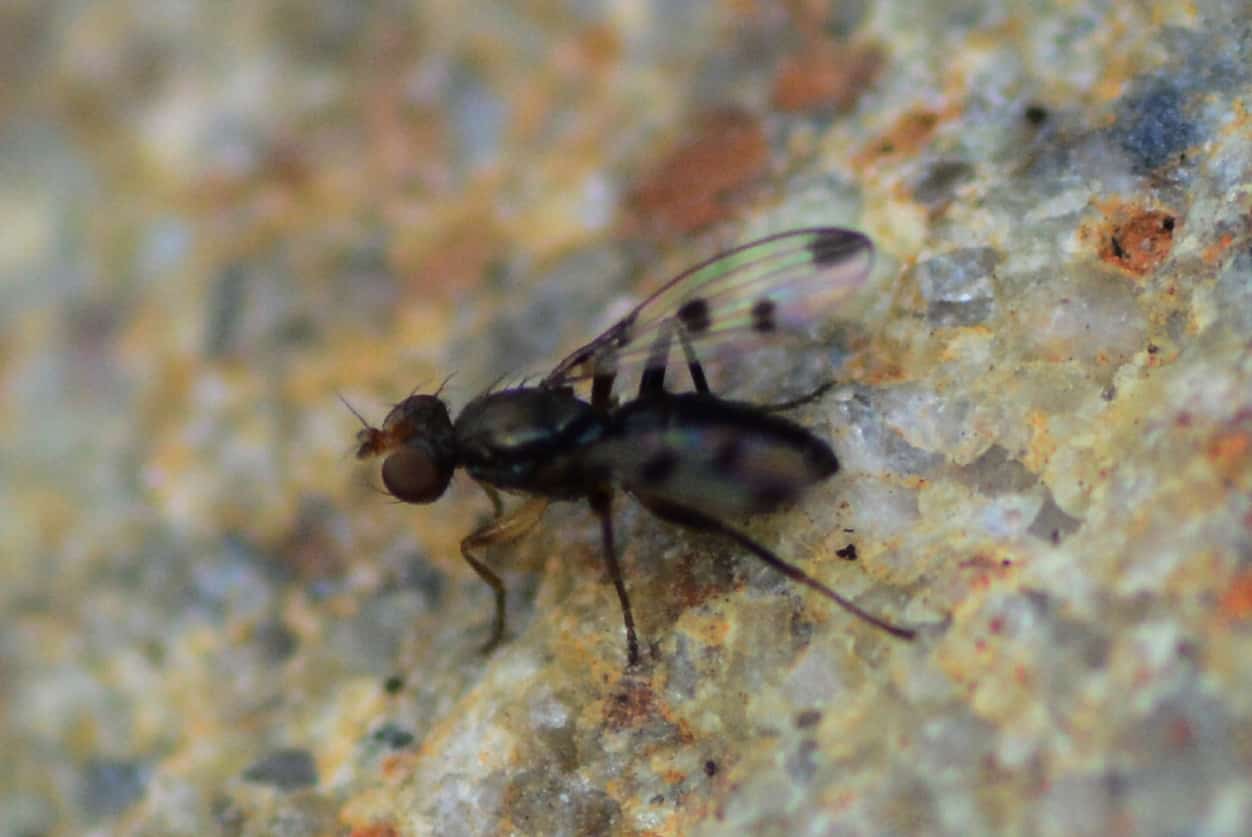
These tiny (1/32 inch) flying pests go by a number of names: punkies, no-see-ums, or simply gnats. (Although, they should not be confused with other midges that are larger, look like mosquitoes, and don’t bite). These pests are small enough to penetrate screens and will bite day or night.
They are mostly found in wet environments like the edges of ponds, marshes, and lagoons. Some species bite humans while others suck the blood of insects as well.
Managing Biting Flies
It can be difficult to provide area-wide control of biting flies because of their hidden habitats and long ranging feeding area. However, there are some steps you can take to reduce their presence.
- Sanitation – Since many flies are attracted to decaying matter. Practice cleaning up piles of vegetation and eliminating potential sites for larval development
- Exclusion – Keep them out! Keep screens in good repair as flies are attracted to warm-blooded “meals”. If standard household screens aren’t fine enough for an infestation, check out finer mesh where those small flies are a problem. Fly paper doesn’t work so well with biting flies as they are more attracted to warm-blooded options. Fans may be more useful to create air currents that drive off small flies. Burning candles/torches that produce smoke and warm air currents may also dissuade smaller pests.
- Repellants – Some “fogging” (ultra-low volume) treatments can be met with limited success when flies are concentrated in a relatively small area. But unfortunately, they kill only on contact and then decompose. You can spray outdoor surfaces where flies rest, but only if they are landing on the surface.
- Professional help – As always, you can consult with the professionals at Cascade Pest Control for all your pest control needs. Don’t hesitate to call 888-989-8979!
